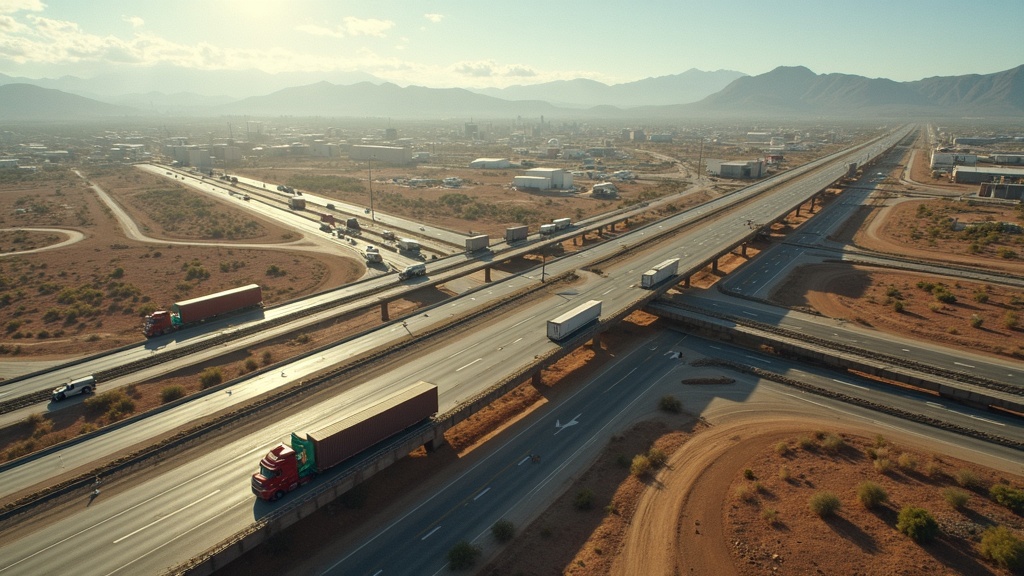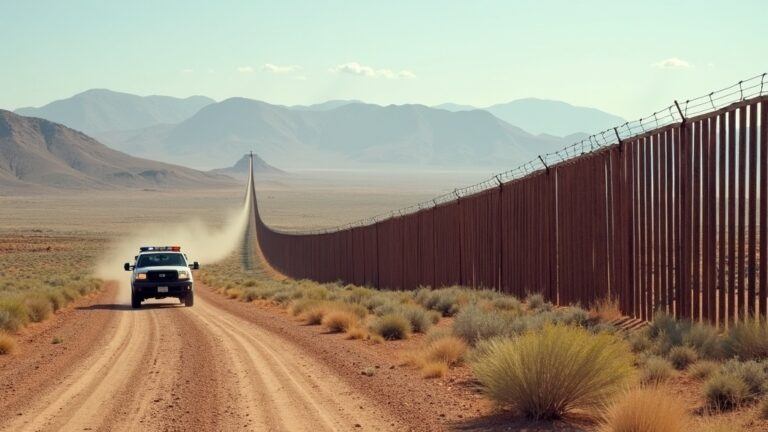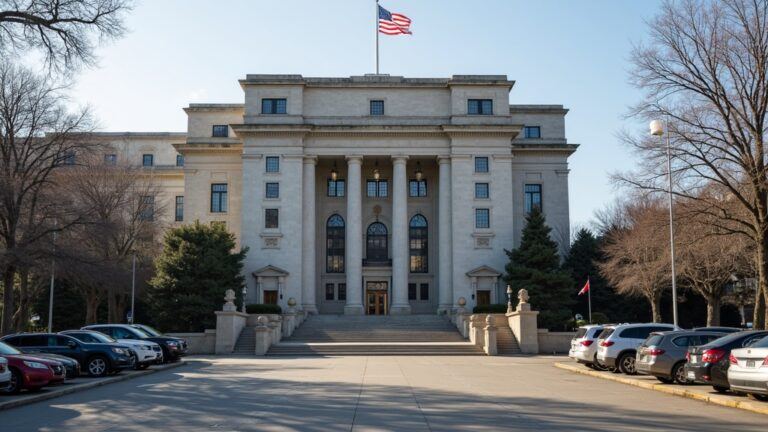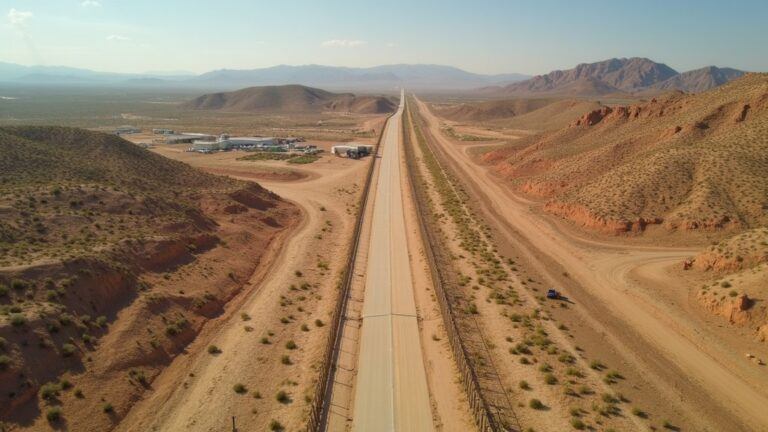Introduction
How Border Crime Affects Trade And Economy
The U.S.-Mexico border sits at the crossroads of opportunity and challenge. On one hand, it’s a lifeline for U.S. and Mexican economies, powering major industries, jobs, and communities. On the other, it’s a magnet for cross-border crime. Everything from smuggling to trade-based money laundering comes into play. When I look at how crime at the border directly shapes supply chains, consumer prices, and even national safety, it’s easy to see why understanding these impacts goes way beyond simple law enforcement. Knowing what’s happening at the front lines helps everyone, from business owners to shoppers, realize why border security really matters. Understanding how border crime affects trade and economy is crucial for all stakeholders.

Table of Contents
What is Border Crime?
Border crime covers illegal activities happening at or across national borders. It’s not just about people sneaking through fences. Think organized crime, smuggling, fraud, and even hiding fake goods in everyday shipments. Here are some of the main types I often come across when researching border issues:
- Drug trafficking: Smuggling narcotics across borders remains a major challenge for both sides.
- Human smuggling and trafficking: Crossing people illegally for profit or exploitation.
- Firearms trafficking: Illegally moving weapons across borders fuels crime cycles on both sides.
- Fuel and commodity smuggling: Diesel, gas, tobacco, and even food products are quietly moved to bypass price controls or taxes.
- Money laundering and trade-based fraud: Criminal groups disguise dirty money by mixing it with regular business transactions.
- Intellectual property theft and counterfeit goods: Copycat electronics, car parts, and medicines cross the border, undercutting legitimate companies.
These types of crime aren’t just about breaking laws. They mess with legal markets, sidestep tax collection, and shake up industries that rely on fair competition and reliable supply chains. Plus, as crime at the border keeps changing and growing, law enforcement and businesses alike have to keep adapting just to keep up.
The U.S.-Mexico Border: Where Trade Meets Crime
More than $1.5 trillion in goods and services move between the U.S. and Mexico each year, making this border a trade powerhouse. Key industries like agriculture, energy, manufacturing, logistics, and retail all depend on smooth cross-border traffic to supply stores and keep prices stable. But here’s what makes things complicated: The same ports and highways that drive economic growth are also channels for crime. That dual purpose forces businesses, law enforcement, and even regular consumers to wrestle with a very real tension between speed and security. With this unique dynamic, every new security rule or incident affects both sides of the border and the larger economy.
How Border Crime Disrupts Trade
Criminal activity along the border isn’t just a problem for border guards. It’s a huge headache for companies and their customers, too. Here’s what I see most often:
- Delays at Ports of Entry: When authorities find smuggling attempts or step up inspections, lines of trucks and cargo can back up for hours or even days. Legitimate goods move slower, shelves go empty, and transportation costs jump, especially during periods of high demand.
- Supply Chain Vulnerabilities: Smugglers hide illegal goods inside legitimate cargo. Some use “rip-on/rip-off” methods, sneaking drugs or other contraband into truckloads without the driver even knowing. All it takes is one scandal for a trustworthy company to land in hot water. These vulnerabilities also give criminals an opening to sneak counterfeit products into the supply chain.
- Financial Costs for Businesses: Security risks lead to higher insurance premiums, more paperwork for compliance, and plenty of wasted time dealing with holds or audits. Businesses must spend big on staff and training just to keep their goods moving safely.
- Reputational Risk: Companies swept up in smuggling or counterfeiting scandals often pay big fines, and may lose customer trust for years. A single incident can have long-term effects on how consumers view a brand.
Each disruption, whether caused by increased inspections after a criminal episode or a shift in smuggling strategy, ends up being a direct cost to business and an indirect cost to consumers.
Economic Costs of Border Crime
When cartels, smugglers, or fraudsters exploit border gaps, everyone pays in some way, often without realizing it. Economic costs show up in a few big buckets:
- Direct Costs: Tax revenues shrink when illegal goods dodge excise duties. Governments and ports pour extra funds into scanners, fences, and staff, straining infrastructure budgets.
- Indirect Costs: Delays, insurance spikes, and stolen market share from counterfeit goods all push up prices on everyday products. In industries hard-hit by black-market competition, job cuts can happen pretty quickly.
- National Security & Economic Stability: Criminal profits get funneled back into organized crime, funding violence and undermining businesses that play by the rules. Eventually, security threats ripple out to communities far from the border, affecting the safety of people living hundreds of miles away.
The ripple effects of border crime can be felt nationwide. As illicit goods flood the market, domestic producers struggle to compete, and the need for more law enforcement and security measures diverts resources that could be spent elsewhere.
Trade-Based Money Laundering and Manipulation
Money laundering through trade isn’t just some movie plot. It’s a real, everyday risk along the border. Here’s how criminals take advantage of trade systems:
- Over/under-invoicing: Changing the value on invoices to hide dirty money or dodge taxes.
- Falsified shipping documents: Inventing fake cargo or mislabeling goods to pass customs unnoticed.
- Phantom shipments: Reporting goods that never actually cross the border, all to shift funds around quietly.
When this kind of manipulation goes unchecked, it scrambles financial records, makes fair business competition harder, and fuels a shadow economy that grows alongside the real one. Businesses must now put more resources into checking financial records and supply chain partners just to keep things honest.
Case Studies: Real-World Impact
- Fuel Smuggling: Cartels take advantage of price differences between U.S. and Mexican diesel, sneaking truckloads across the border and selling them for a quick profit. This undercuts legitimate fuel stations and costs local governments millions in lost taxes.
- Counterfeit Goods in Supply Chains: Fake auto parts and electronics often hide in otherwise legal shipments. Drivers or trucking companies may have no idea until authorities seize the cargo, disrupting legitimate trade and risking safety when those knockoff products hit store shelves.
- Narcotics in Commercial Shipments: Major drug busts at Texas and Arizona ports show how cartels slip narcotics into everyday cargo. Sometimes, even a single seizure leads to broad delays and scrutiny for innocent traders.
- Trade-Based Laundering Rings: Federal indictments show organized networks laundering billions through shell companies and false trade flows, hurting real businesses and destabilizing local economies.
Each of these stories highlights the big impact border crime can have—not just in lost revenue, but in safety, jobs, and the health of regional economies. Communities near the border are especially vulnerable, but every consumer can feel the effects through higher prices or riskier products.
Law Enforcement and Policy Response
Combating border crime takes a big team effort, and a lot happens behind the scenes:
- CBP (Customs and Border Protection): These folks handle inspections, use cargo tracking tools, and run trusted trader programs to spot suspicious shipments while moving trusted cargo faster.
- HSI (Homeland Security Investigations/ICE): Specializes in investigating large-scale smuggling, laundering, and organized crime activities tied to international trade.
- DEA, FBI, ATF: Each agency brings different expertise to the table, from tracking drug traffickers to dismantling weapons smuggling networks.
- Binational Cooperation: Joint task forces and information sharing between the U.S. and Mexico play a big part in keeping things under control. Trade and security agreements go a long way in building trust and coordinating raids or seizures.
- Private Sector Partnerships: Programs like CTPAT (Customs Trade Partnership Against Terrorism) work with companies to strengthen security, spot problems early, and make reporting any suspicious activity easier.
In recent years, these teams have worked harder to bring advanced technology and real-time information sharing into their operations, helping stay one step ahead of the latest tricks used by smugglers and traffickers.
Challenges in Protecting Honest Trade
Keeping trade safe from crime isn’t easy, and I see some pretty tough hurdles pop up over and over:
- Volume vs. Scrutiny: With so much cargo moving every day, giving everything a close look without slowing trade to a crawl is tough work.
- Technology Gaps: Smugglers get crafty with everything from drones to high-end hiding compartments. Law enforcement sometimes falls behind on tools or cyber skills.
- Corruption Risks: Bribes or threats can sway officials, breaking the chain of trust and letting illegal activity slip through.
- Policy Differences: The U.S. and Mexico have different laws, enforcement tactics, and priorities, which can stop investigations or slow joint action.
Addressing these hurdles requires a constant exchange of best practices and a push for ethical standards on both sides of the border. As technology gets better, so do the schemes of organized crime, making constant vigilance and innovation essential.
Innovations and What’s Next in Border Security
- AI & Data Analytics: Many ports are now using artificial intelligence to spot patterns of suspicious activity and flag risky shipments automatically. This tech makes it easier to scan vast amounts of data that humans would miss and helps prioritize which shipments need further checking.
- Blockchain in Trade: More supply chains are testing blockchain tech to keep records tamperproof, making it way harder for criminals to sneak in forged documents or phantom shipments. This gives companies more confidence in the integrity of their transactions.
- Smart Borders & Trusted Trade: Programs speed up processing for companies with strong compliance records, using tech like biometric scans and real-time freight tracking to make things smoother and safer for trusted importers and exporters.
- Globalization vs. Security: As trade deals change, expect more rules and digital tools aimed at plugging gaps that cross-border criminals exploit. The emphasis is shifting towards smarter, more flexible policy that adapts to new threats as they arise.
The future of border security looks more connected and technology-driven, but always relies on active cooperation between governments, law enforcement, and the private sector to make it work.
What Businesses and Consumers Should Know
- For Companies: Good compliance programs, honest supply chain partners, and active risk checks help avoid becoming a pawn in smuggling or fraud operations. Training staff to spot red flags goes a long way to stopping crime before it starts.
- For Consumers: Buying counterfeit goods or untaxed fuel can seem like a deal, but it props up black market networks that drain communities and cost real jobs. Supporting legitimate businesses helps keep local economies healthy.
- For Policymakers: Keeping the economy steady relies on close law enforcement teamwork, smart policy, and rules that adapt to how crime changes. Continued focus on digital training, transparency, and international cooperation makes all the difference.
Border crime packs a punch that goes way beyond police action. It hits wallets, job markets, and the safety of entire regions. Protecting trade takes open communication, smarter technology, and real cooperation among governments, businesses, and everyday folks alike. Solving these challenges is about securing both livelihoods and cross-border prosperity for the future.
If you feel like you need to report a crime involving money laundering, please don’t hesitate to contact your local law enforcement or, if in the United States, reach out to the Homeland Security Investigations or the Federal Bureau of Investigations.
Contact Us:
If you need to contact us for any reason, please feel free to do so here!









